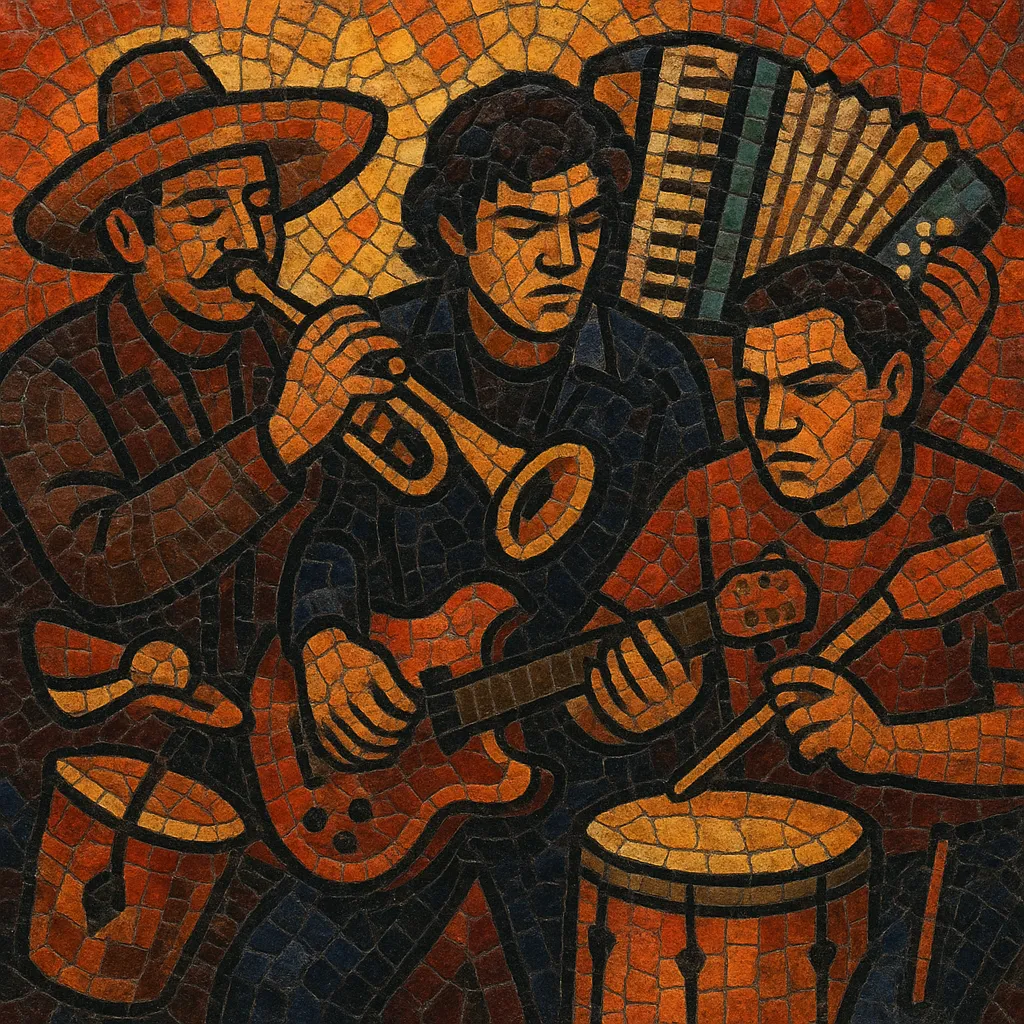Mexican rock is the umbrella term for rock music created in Mexico, blending Anglo-American rock idioms with local rhythms, instruments, and Spanish-language lyricism.
It typically features electric guitars, bass, and drum set, but often integrates instruments such as trumpets, accordion, or folkloric percussion to evoke mariachi, ranchera, cumbia, and other regional styles. Lyrically, it ranges from street-level social commentary and political critique to playful wordplay and romantic storytelling, frequently using Mexican slang and cultural references.
Stylistically it spans early rock and roll covers, garage and surf, psychedelic and hard rock, punk and urbano, and the 1990s alternative wave that helped define the broader movement of rock en español and Latin alternative.
Rock and roll entered Mexico in the late 1950s via U.S. radio, films, and touring acts. Early Mexican groups like Los Teen Tops popularized Spanish-language versions of American hits, while garage, surf, and beat influences spread in the 1960s alongside the British Invasion. This period established the basic band format and a taste for blending rock with local idioms.
By the early 1970s, psychedelic and hard rock scenes flourished around youth counterculture (“La Onda”). The massive 1971 Avándaro Festival became a symbol—but also prompted a state and media backlash that pushed rock into an underground circuit of informal venues known as “hoyos funky.” Bands like Three Souls in My Mind (later El Tri) kept the scene alive with a grittier, urban sound.
A friendlier media climate and label initiatives (notably “Rock en tu Idioma”) revived Spanish-language rock across Latin America. In Mexico, bands such as Caifanes, Maldita Vecindad, and Fobia brought post-punk, new wave, and barrio-inflected styles to mainstream attention, cementing a national identity for rock sung in Spanish.
The 1990s saw global recognition. Café Tacvba’s genre-bending approach, Maná’s pop-rock appeal, and Molotov’s rap-rock provocation broadened audiences. Mexican rock diversified—embracing folk hybrids, ska-rock fusions, and sophisticated alternative production—while influencing the emerging umbrella of Latin alternative.
The 2000s and 2010s ushered in an indie boom (e.g., Zoé), stronger festival circuits, and digital distribution that enabled regional scenes to thrive. Cross-pollination with ska, hip hop, electronic music, and regional Mexican styles continues, keeping Mexican rock stylistically plural while rooted in Spanish-language storytelling and local rhythms.
Start with a classic rock setup: two electric guitars (one rhythm, one lead), electric bass, and drum kit. Add optional colors like trumpet (mariachi timbre), accordion (norteño/cumbia flavor), or percussion (guiro, congas) to localize the sound. Drums typically use a backbeat, but incorporate syncopations and danceable patterns borrowed from cumbia or son to make the groove feel distinctly Mexican.
Use familiar rock progressions (I–IV–V, ii–V–I, or minor i–VI–III–VII) and intersperse modal colors common in regional music (Dorian or Phrygian touches). Melodies can reference ranchera or bolero phrasing—dramatic leaps, call-and-response hooks, and singalong choruses. Guitar leads may alternate between bluesy bends, surf-influenced tremolo picking, and lyrical, folk-like lines.
Write in Spanish, drawing on local slang and cultural references. Common topics include urban life, social inequality, humor and satire, romance, and national identity. Balance poetic imagery with direct, conversational phrasing so songs connect both in intimate venues and large festivals.
Blend clean, chorus-tinged verses with crunchier, overdriven choruses. Layer group vocals or crowd-style shouts for anthemic refrains. If using traditional elements (trumpet, accordion), arrange them to complement, not overwhelm, the guitars—e.g., countermelodies in verses and unison hooks in choruses. Keep the rhythm section tight and slightly ahead of the beat for a lively, dancing feel.


